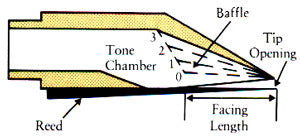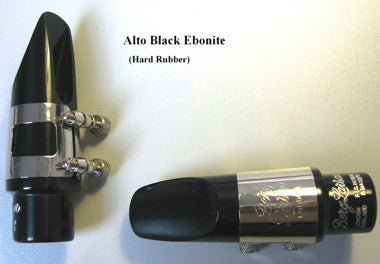Larsen
Berg Larsen Alto Sax Ebonite Mouthpiece - Out of Range - BL402
Berg Larsen Alto Sax Ebonite Mouthpiece - Out of Range - BL402
SKU:MLAR+ 110/1 SMS
Couldn't load pickup availability
Black Ebonite (hard rubber) is the traditional material for mouthpieces and has been used by Berg Larsen since 1945. Ebonite has certain absorbant qualities which give a more resonant sound.
Choose from traditional (SMS) facing or longer (M) f
When choosing a mouthpiece there are a number of factors to consider.

1.) TIP OPENNING
The tip opening is the distance between the tip of the reed and the tip of the mouthpiece, measured in thousands of an inch. Generally speaking, the wider the tip opening, the softer the reed that may be used. For most beginners a narrower tip opening will result in a clearer tone and more consistent intonation.
2.) TONE CHAMBER
The degree of edge or brightness the player obtains is dictated by the size of the tone chamber. Referring to the diagram above, the more 'baffle' that is built into the tone chamber, the more edge the tone will have. A '0' tone chamber will have the most edge and a '3' will have a more mellow tone.
Tone Chambers: '0' - BRILLIANT, '1' - BRIGHT, '2' - ROUND, '3' - MELLOW.
3.) LENGTH OF FACING
The term 'SMS' or 'M' indicates the choice of facing. The SMS, or French facing is usually shorter with a steeper curve. The 'M' or American facing is slightly longer with a flatter type curve. These facing term is only to indicate the facing curve length and in no way affects the actual sound of the mouthpiece.
EXAMPLE : The designation 100/0SMS for a tenor sax mouthpiece indicates a medium-close tip opening, a brilliant tone chamber and a short facing length.
Share


